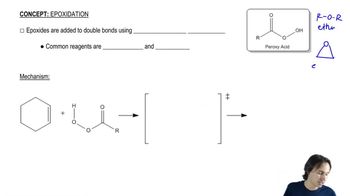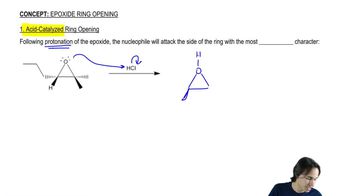Textbook Question
Predict the major products of the following reactions.
b. trans-hex-3-ene + peroxyacetic acid (CH3CO3H) in water
c. 1-methylcyclohexene + MMPP in ethanol

 Verified step by step guidance
Verified step by step guidance Verified video answer for a similar problem:
Verified video answer for a similar problem:



 4:34m
4:34mMaster Acid-Catalyzed Epoxide Ring-Opening with a bite sized video explanation from Johnny
Start learning